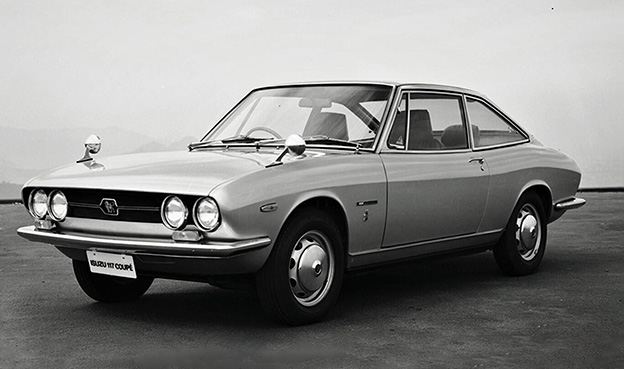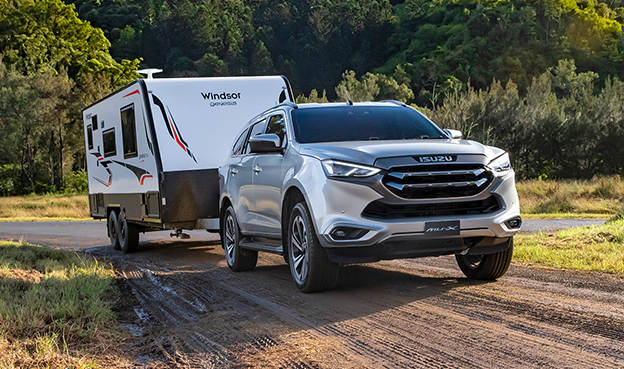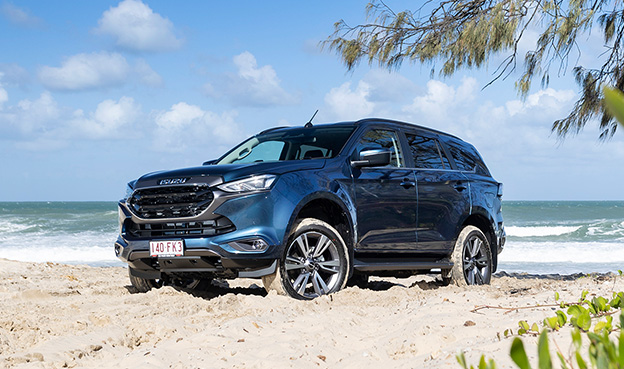

Operating for over 10 years and with over 7,500 Isuzu owners partaking in I-Venture Club training events across the country, there is no denying that Isuzu drivers love getting out-and-about and putting their vehicles to the test, while learning lots along the way! So in the depths of COVID in 2020, I-Venture Club pivoted to Online Learning sessions via Zoom, understanding that no matter what, we wanted to keep helping our owners understand how to get the most out of their Isuzus. This innovative training method allowed us to keep in touch despite lockdowns that got in the way of face-to-face learning. It’s very quickly became a huge hit, and is now a regular part of our service, offered to D-MAX and MU-X owners.
As an educator, I’m always keen to learn what the primary interests of our attendees might be – whether that be at a online or in-person I-Venture Club event. So, looking back on our courses from over the years, as well as our most recent rounds, I’ve assembled my Top-Five questions asked about off-roading at our I-Venture Club training courses.

#1 FAQ: “Can you clarify what pressure I should be using on the highway and on various off-road terrains?”
This one is easy for the highway… refer to your tyre placard. The sticker affixed to the driver’s B-pillar when you open the door has the information you’re seeking. The pressure recommendations vary according to the year, model and model variant you might be driving, so you’ll need to consult the placard displayed on your vehicle as there’s never a “one size fits all”.
Isuzu UTE Australia has gone to great lengths to arrive at these numbers. It’s all to do with vehicle weight and prescribing the optimal tyre pressure to meet the vehicle’s designed Gross Vehicle Mass (GVM).
I’ve practised using the placarded pressures for nearly thirty years now and I find the settings are accurate and provide me with great longevity (80,000 kms or more), sharp steering, no punctures, short braking distances and especially welcome, a comfortable ride!
When it comes to off-roading - from sand to mud to rocks - a good starting point would be 20psi. This will allow your tyre footprint to expand, ultimately improving your traction. From there, you can adjust your psi as needed, especially if the terrain is trickier than you originally thought!

#2 FAQ: “Do I have to stop to engage 4WD?”
Yes and no. In the first instance, High-Range 4WD can be engaged at speeds up to 100km/h on a loose surface, so setting the vehicle up in 4WD initially is best done on the move.
Thankfully in an Isuzu, it’s easy to do; merge onto the dirt, keep the front wheels aimed dead-ahead to synchronise front and rear wheel speeds, come off the accelerator, and then at speeds up to 100km/h, rotate the Terrain Command 4WD selector from 2H to 4H and observe the change in the dashboard display. It will reveal the 4WD symbol, confirming the front axle is now engaged.
Low-Range selection however, will require the vehicle to be stationary, so come to a stop. With automatic vehicles, select Neutral with the main gear shifter, before turning Terrain Command into the 4L position by simply pushing and rotating the dial. Observe the change in the dash display and then select a Drive gear; either D, or use the sports-shift manual-mode. Manual gearbox models need the clutch depressed to facilitate the change.

#3 FAQ: “When should I be using the Rough Terrain Mode on the new-generation MU-X?”
Rough Terrain Mode (RTM) is a feature seen only on the new-generation MU-X (+2021 Model Year). Its role is to improve the response of the Traction Control System (TCS), alleviate wheel spin and ensure that torque is sent to the wheels with the highest amount of traction on offer.
One of the great off-road challenges is finding grip when there is none. TCS on its own is great when on surfaces like a gravelly hillside. As a wheel loses that all-important grip and the engine speed increases, wheel spin is swiftly arrested by the brakes and converted to drive delivered to the opposing wheel on that axle. That usually will keep you moving, but if the scree on that slope is really slippery, then having the system react quicker will be more helpful in reducing wheel spin.
Engaging RTM finesses the MU-X’s throttle control and swiftly modulates brake force to each individual spinning wheel, again, distributing torque to the opposing-wheel on the same axle with more grip. This keeps wheel spin to a minimum, all the while maximising torque transfer to the track, with little, to no loss of momentum.
One tip for RTM and other 4WD button functions – to activate and deactivate these tools, make sure you do a long button depress. Count one-two and then release, rather than just pressing the button.

#4 FAQ: “Do I need to turn off any IDAS◊ functions to go 4WDing?”
This is a great question, and it depends a little on the terrain you’re driving on. As the functions of Isuzu’s Intelligent Driver Assistance System (IDAS◊) are designed primarily for on-road safety, there’ll be moments off-road, where Autonomous Emergency Braking (AEB) inputs aren’t desirable.
I’ve noted in my use, that journeys on sand, like my most recent visit to Western Australia’s Lancelin Beach district haven’t required any change, however, a visit to our Queensland location of Gordon Country did. That’s likely due to the Isuzu’s IDAS◊ camera picking up the vegetation trackside and the innumerable mounds of dirt and rock as a threat, whereas on the flat expanses of sand, there were none. A quick note that if you are in soft sand or mud, it will be useful to turn off the Traction Control System (TCS) and Electronic Stability Control (ESC).
If you venture into a landscape where creek crossings are likely, then a dive into the menu of a new-generation D-MAX and MU-X to turn off AEB will be smart, as the camera will see the elevated “horizon” of the water as an approaching mass and a risk, applying the brakes mid-stream.
If you only require the use of 4H, AEB can be turned off manually. Using the steering wheel controls of your Multi Information Display (MID) will get you into the menu and selecting settings → driver support settings → AEB → brake and warning intervention → disable, will temporarily remove that function.
Luckily, when you are traversing more difficult terrain and need to engage 4L, some of these IDAS◊ features will automatically be turned off, including AEB and TCS.
Just remember that if you do turn the engine off, make sure when starting up again, that you turn these IDAS◊ features off again as required.
#5 FAQ: “If I’m going to give the Bankcard a hit with some recovery tools, what should I get?”
There is a LOT of gear out there that will give you some extra peace of mind when 4WDing. Some are good, some not so, but this little list, I reckon, will fall under my ‘essential’ banner.
Tyre inflation duties will likely be your number one priority. That will mean having a decent 12-Volt compressor and something to do the measuring. There are plenty of different makes and models when it comes to compressors, some with single motors, some with twins. Rose, my wife and life traveller, has her own MU-X and she has a single motor ARB pump parked in the back by the jack. I run their twin motor jigger in my D-MAX, located in the tub, because I usually am inflating the tyres of others at training day’s end and it’s faster. Make that decision based on your budget and available space. A reliable gauge to measure the pressure goes hand-in-hand with the pump.
A long-handled shovel is up there, so too a pair of recovery boards – both would be considered essentials when hitting soft sand. That should get you most the way around Australia reliably.
If you want a deeper insight into your Isuzu and what it is capable of off-road, be sure to check out one of our upcoming I-Venture Club training events, available at key locations across the country or online. See you there!





